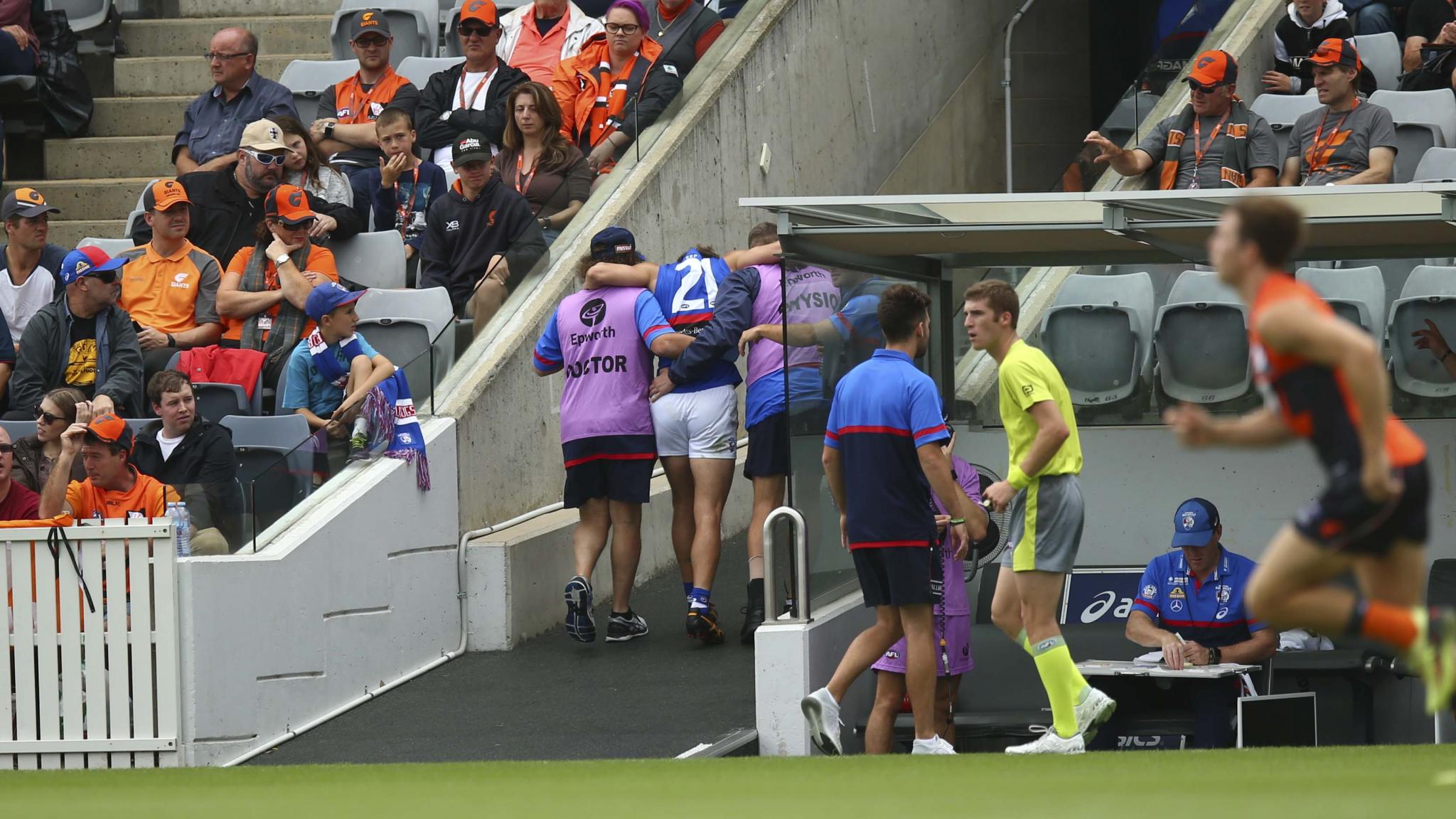GENETICS, psychology, unconscious compensation or just plain bad luck?
There are now five AFL players asking themselves which of those factors is most likely to have contributed to the repeat anterior cruciate ligament rupture they've suffered this season.
Collingwood's Matt Scharenberg was the latest to join the unlucky group on Saturday when his left knee – reconstructed for the first time in 2014 – buckled in a simple change of direction at the MCG.
The 22-year-old will have his third ACL rebuild in the coming days after his right one was repaired in 2015.
The fact remains; the risk of an ACL injury in the same knee is increased if you've done it before and return to the same sport – but by how much?
MIRACLE RETURN Forgotten Swan back after 2136 days
For Melbourne's Jake Lever, who tore his left ACL for the second time in June, the inflated risk of graft failure – predominantly hamstring or patella tendon these days – was believed to be from 15 to 25 per cent.
But what about Tom Liberatore, Nic Naitanui, Jon Patton, or, to a lesser degree because he's done it before on the same leg, Scharenberg?
What was the risk of them potentially rupturing their other knee on their return to competitive sport?
Leading sports medico Dr Peter Larkins says there's evidence to suggest an AFL player, should the return to the same elite level post-surgery, is five to seven times more likely to pop his "good" ACL than before the first injury.
However, there's no hard evidence that states exactly why that is.
"There's a number of potential theories about it," Larkins told AFL.com.au.
"It's well recognised that it happens, it's not a coincidence.
"There's a strength difference, and people who have had an ACL have really got to work hard on their other leg as well as the injured leg when they're doing their rehab, or the other one becomes more prone.
"It's something to do with the motor control in the brain – if you've had an injury, the nerve supply to the muscles gets affected.
"I think also psychologically players become a little bit protective of the injured one and they get the non-injured one to do a bit more work.
"You only have to be off the pace the slightest amount in a high demand sport like footy or netball … if you're favouring one because you're a bit apprehensive about the operated one, the one you're favouring is more likely to get injured."
Tom Liberatore is helped from the field after his round-one injury. Picture: AFL Photos
Larkins said there were also theories suggesting the design and shape of a person's knee could contribute to ACL failure on both sides, as well as whether a relative has history with the same injury.
AFL Doctors' Association president Dr Andrew Potter said five repeat ACL injuries in one season wasn't an alarming number, especially when there was no hard evidence to support why the ligament in the other knee has an increased chance of failure.
However, he said it was important to watch for trends over a number of years.
"Nothing has changed, I don't think people are doing any different sort of rehab, I don't think people are doing different surgery," Potter said.
"It's tempting to be concerned when we get a cluster like this.
"Some years we find there's quite a lot and other years there's not quite as many, it seems to vary enormously.
"It's concerning, and you feel for those guys who have done it and you can't necessarily blame bad surgery or bad rehab.
"Sometimes, it's just bad luck."
Potter also said there wasn't much clubs weren't already doing to help protect their players' ACLs, reconstructed or otherwise.
"Most clubs in their pre-season and throughout the year would have their players go through a series of exercises regularly which helps to assist with jumping and landing in order to maintain the strength of their muscles around the knee," he said.
"It starts with the hips and pelvis and going down to the muscles around the knee, the lower leg and the ankles, all to provide the best support for the knee to help prevent that.
"All clubs would have that sort of program incorporated in their regular gym work and regular training.
"What we'll always be watching is, the figures of the outcomes to see if there's any pattern that needs that have some form of intervention to make a change."
Podcast: How Brayshaw's Demons deal went down
Find AFL Exchange on iTunes, Audioboom, Acast, Mixcloud or RSS.


